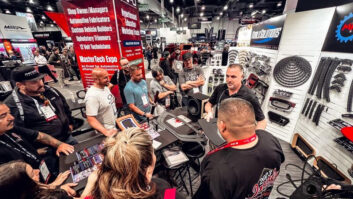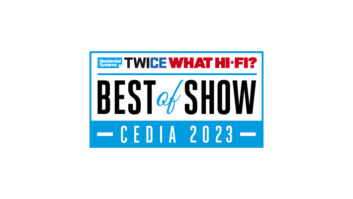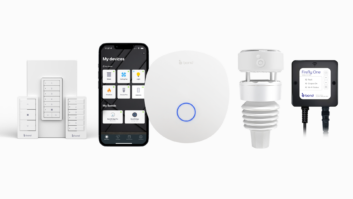DETROIT — We’re not quite at the flying cars point of “The Jetsons,” but would anyone really be surprised at this point? Even theirs weren’t controlled by smart watches.
At the North American International Auto Show (NAIAS), held here Jan. 12-25, and at International CES in Las Vegas earlier this month, autonomous driving in all of its forms is so prevalent that the idea is no longer deemed outrageous. While Mercedes and Audi previewed concept cars for the luxury consumer (with one able to be navigated by a smart watch), Ford CEO Mark Fields said the automaker plans to price its driving- automation features low enough so they’re found in all cars.
Enough auto technology news broke from the two shows to fill an entire issue of TWICE, but here are just five of the highlights:
1 Verizon said it is getting into the telematics business.
The carrier announced Verizon Vehicle, a diagnostic and roadside assistance subscription program. An OBD reader plugs into a car’s OBD port (Verizon said it is DIY installation), and built-in GPS provides assistance and emergency services, stolen-vehicle tracking, and vehicle-diagnostic updates and service reminders. Updates are sent in near real time to a cellphone via text, email or push notification appearing on an optional app.
Verizon said it will be compatible with nearly every vehicle made and sold in the U.S. since 1996. The service will be available initially through VerizonVehicle.com and (800) 711-5800 but will roll out through nationwide retailers late in 2015.
2 Chevrolet is bringing electric to the masses.
The automaker lifted the veil on the Bolt EV concept, an electric vehicle that will start at $30,000. Noted General Motors CEO Mary Barra: “The Bolt EV concept is a game-changing electric vehicle designed for attainability, not exclusivity. Chevrolet believes electrification is a pillar of future transportation and needs to be affordable for a wider segment of customers.”
The Bolt EV will be able to travel more than 200 miles on a charge, with modes available for different driving styles (commuting vs. cruising, for example).
3 Honda knows if you’re going to crash before you do.
Summoning “Minority Report,” Honda’s predictive cruise control technology uses a camera and radar to sense other cars on the road, while algorithms predict the likelihood of them cutting in to the lanes. Although technology already exists that can judge the distance between a car and the one in front of it, Intelligent Adaptive Cruise Control (i-ACC) is able to compute the likelihood of a cut-in up to five seconds before it occurs, said Honda, and will react without startling the driver.
The brakes will initially apply mildly, said Honda. An icon will appear to notify the driver, and a stronger break will then be applied.
The technology will initially be available in Europe (and is reportedly able to judge the side of the road one should be driving on).
4 Eco-friendliness is a lot closer.
Toyota showed its first hydrogen fuel cell car during CES, and it wants others to join suit. In a sharp contrast to the patent wars so prevalent in the CE industry, Toyota announced it will give manufacturers and parts suppliers the opportunity to use its 5,680 hydrogen-related patents royalty-free until 2020, while 70 patents regarding fuel production and supply will be royalty-free indefinitely. The 2016 Mirai is set to debut in October. Meanwhile, Honda said its FCV Concept fuel-cell car will be available in 2016. It also said it will have new battery electric and plug-in hybrid vehicles in 2018.
5 Local Motors 3D-printed a car.
Live at NAIAS, tech manufacturer Local Motors printed and assembled the Strati, a car made of ABS plastic. The process takes about 44 hours, according to Local Motors, and this was not the first time the company had completed such a feat: It also printed cars at the SEMA and IMTS shows last fall. The Strati seats two and can travel up to about 45 mph, a company spokeswoman said.
A factory in National Harbor, Md., is set to break ground in the third quarter, with the first line of 3Dprinted cars expected to ship “shortly thereafter.” — Additional reporting by Joseph Palenchar













